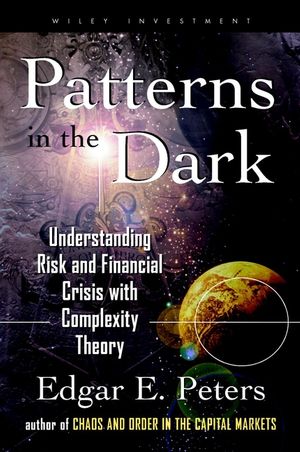Complexity, Risk, and Financial MarketsISBN: 978-0-471-23947-5
Hardcover
240 pages
April 1999
 This is a Print-on-Demand title. It will be printed specifically to fill your order. Please allow an additional 10-15 days delivery time. The book is not returnable.
Other Available Formats: Paperback
|
||||||
Edgar E. Peters's latest book, Patterns in the Dark: Understanding Risk and Financial Crisis with Complexity Theory is not merely an autobiographical indulgence. The bulk of the book is Peters's lucent analysis expounding on the need for uncertainty. Whether he uses the example of genetic algorithms to show how randomness can lead a process to a goal even when the ultimate path is unknown, or if he simply shows how David Bowie's creation of Ziggie Stardust illustrates the integration of two seemingly contrary elements in the creative process (with a nod toward uncertainty as a requirement for stability), Peters's always seems to provide compelling insight into how global structure and local randomness interact.
Edgar E. Peters's latest book, Patterns in the Dark: Understanding Risk and Financial Crisis with Complexity Theory is not merely an autobiographical indulgence. The bulk of the book is Peters's lucent analysis expounding on the need for uncertainty. Whether he uses the example of genetic algorithms to show how randomness can lead a process to a goal even when the ultimate path is unknown, or if he simply shows how David Bowie's creation of Ziggie Stardust illustrates the integration of two seemingly contrary elements in the creative process (with a nod toward uncertainty as a requirement for stability), Peters's always seems to provide compelling insight into how global structure and local randomness interact.
Ultimately, the book's implications for "global structure" policymakers are more clear than any prescriptions that might be handed down to individual investors acting in an environment of local randomness. However, the discussions regarding various process models and their implications for economic activity are worth the price of admission alone. Interested investors ought to check it out.--("Fool On The Hill - An Investment Opinion" by Alex Schay - June 1999)
Edgar E. Peters's latest book, Patterns in the Dark: Understanding Risk and Financial Crisis with Complexity Theory is not merely an autobiographical indulgence. The bulk of the book is Peters's lucent analysis expounding on the need for uncertainty. Whether he uses the example of genetic algorithms to show how randomness can lead a process to a goal even when the ultimate path is unknown, or if he simply shows how David Bowie's creation of Ziggie Stardust illustrates the integration of two seemingly contrary elements in the creative process (with a nod toward uncertainty as a requirement for stability), Peters's always seems to provide compelling insight into how global structure and local randomness interact.
Ultimately, the book's implications for "global structure" policymakers are more clear than any prescriptions that might be handed down to individual investors acting in an environment of local randomness. However, the discussions regarding various process models and their implications for economic activity are worth the price of admission alone. Interested investors ought to check it out.--("Fool On The Hill - An Investment Opinion" by Alex Schay - June 1999)



